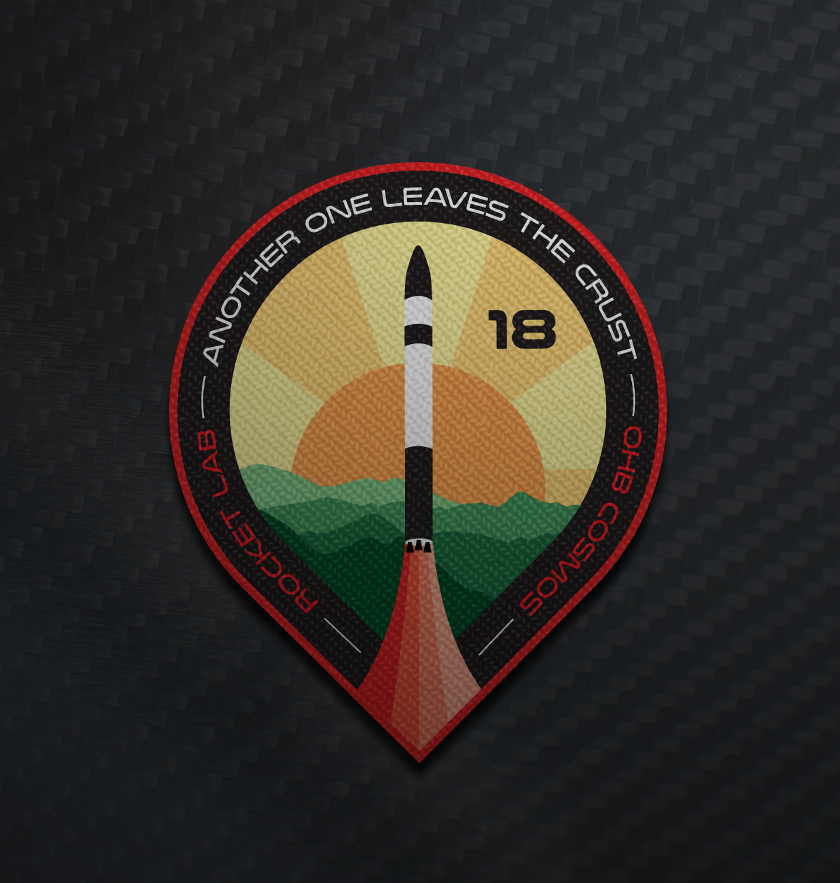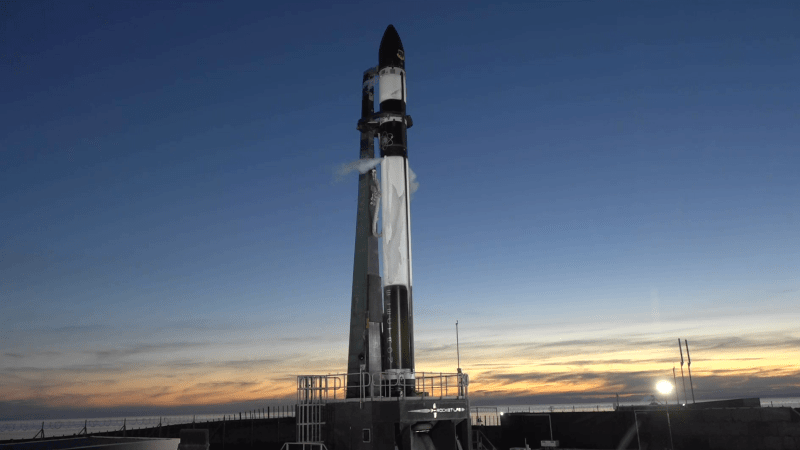Featured image credit: Rocket Lab
Lift Off Time | January 20, 2021 – 06:58 UTC | 19:58 NZT |
|---|---|
Mission Name | Another One Leaves The Crust, a communication satellite for the OHB Group |
Launch Provider | Rocket Lab |
Customer | OHB COSMOS International Launch Service GmbH for OHB Group |
Rocket | Electron |
Launch Location | Launch Complex-1A, Māhia Peninsula, New Zealand |
Payload mass | Undisclosed, up to a maximum of 200 kg (~440 lbs) |
Where are the satellites going? | Polar orbit |
Will they be attempting to recover the first stage? | No, but they will attempt to recover the first stages of future missions this year. |
Where will the first stage land? | It will crash into the Pacific Ocean. |
Will they be attempting to recover the fairings? | No, this is not a capability of Electron |
Are these fairings new? | Yes |
How’s the weather looking? | TBD |
This will be the: | – 18th Electron launch – 1st Rocket Lab launch of 2021 – 4th orbital launch attempt of 2021 |
Where to watch | Official livestream Tim Dodd, the Everyday Astronaut, will be streaming at T-30 minutes; come ask questions and join the conversation live! |
What does all this mean?
Rocket Lab will launch their Another One Leaves The Crust mission from Launch Complex-1A, Māhia Peninsula, New Zealand. This mission is a dedicated launch to lift a satellite for the European space technology company OHB Group into orbit. The mission is scheduled to take off during its 10 day launch window, opening on January 16, 2021, at 07:38 UTC [20:38 NZT]. On this mission, Electron will carry a communication satellite into Polar Orbit.
OHB Group Satellite
The satellite enclosed in the fairing during this mission is a single communication microsatellite that will open up usage of specific frequencies to support future services from orbit. This could mean that the satellite will function as a relay in order to reduce the weight of communication systems on other smaller satellites. Unfortunately, there is little to no information on any satellite specifics like weight, dimensions, or what specific services the satellite will provide in the future. We can only speculate about those things, but what we know is that Electron can launch a maximum payload of up to 300 kg (~660 lbs) into a Low Earth Orbit (LEO), or 200 kg (~440 lbs) into a 500 km Sun-Synchronous Orbit (SSO).
An important detail is that the customer is OHB COSMOS International Launch Service GmbH, the launch service division of OHB Group. They are responsible for the launch and all other launch related topics. However, OHB Group has built and will also operate the satellite once it is in orbit.
Another One Leaves The Crust might not look like the most interesting mission, but it’s remarkable in another way. It took only 6 months from signing the contract to launching the satellite for OHB Group, which underlines and supports Rocket Lab’s overall mission to provide fast launch solutions for customers.

Mission Profile
After launch and a nominal first and second stage burn, the kick stage and the payload will initially be deployed into an elliptical orbit. The kick stage, with its relightable Curie engine, will then perform a series of burns to further raise its highest point in orbit (apogee) in order to get the payload into its target orbit. After a nominal deployment of the customer’s payload, Rocket Lab’s kick stage will start performing a de-orbit burn. This burn will result in a lower perigee (lowest point in an orbit) and in greater atmospheric drag so that the kick stage will burn up during re-entry and will not contribute to existing space junk.
Another One Leaves The Crust Timeline
Pre-Launch
| Hrs:Min:Sec From Lift-Off | Events |
| – 04:00:00 | Road to the launch site is closed |
| – 04:00:00 | Electron is raised vertical, fueling begins |
| – 02:30:00 | Launch pad is cleared |
| – 02:00:00 | LOx load begins |
| – 02:00:00 | Safety zones are activated for designated marine space |
| – 00:30:00 | Safety zones are activated for designated airspace |
| – 00:18:00 | GO/NO GO poll |
| – 00:02:00 | Launch auto sequence begins |
Launch
| Hrs:Min:Sec From Lift-Off | Events |
| – 00:00:02 | Rutherford ignition |
| 00:00:00 | Lift-Off! |
| + 00:02:30 | Main Engine Cut Off (MECO) on Electron’s first stage |
| + 00:02:33 | Stage 1 separation |
| + 00:02:36 | Stage 2 Rutherford ignition |
| + 00:02:57 | Fairing separation |
| + 00:06:06 | Battery hot-swap |
| + 00:08:45 | Electron reaches orbit |
| + 00:08:51 | Second stage engine cut off |
| + 00:08:55 | Stage 2 separation from Kick Stage |
| + 01:06:07 | Curie engine ignition |
| + 01:09:28 | Curie engine cuts off |
| ~+ 1:10:00 | Payload deployment |
What is Electron?
Rocket Lab’s Electron is a two-stage small-lift orbital launch vehicle with two optional third stages. Electron first flew on May 25, 2017. Since the maiden flight, Electron has flown for a total of 17 times, with 15 of those flights being fully successful. On the maiden flight, It’s a Test, the rocket was manually terminated after a failure in the ground communication system. During Rocket Lab’s 13th launch, Pics or it didn’t happen, the second stage suffered from an electrical issue resulting in the loss of the vehicle. Since Rocket Lab’s first flight, they have successfully delivered 96 satellites to orbit.

The Rocket
Electron consists of two stages with an optional kick stage or Rocket Lab’s Photon satellite bus. Electron is 18 m (59 ft) tall, 1.2 m (3.9 ft) in diameter, and can loft up to 300 kg (~660 lbs) into LEO. It is the first rocket ever to be fully manufactured out of advanced and lightweight carbon composites.
1st Stage
Powered by nine Rutherford engines running on RP-1 and LOx, the first stage lifts off with a combined thrust of 224 kN (50,400 lbf) at an ISP (specific impulse) of 311 s. These Rutherford engines are 3D printed and get produced in only 24 hours.

2nd Stage
Electron’s second stage is powered by one vacuum optimised Rutherford engine, again running on RP-1 and LOx. With a thrust of 25.8 kN (5,800 lbf) in vacuum and an ISP of 343 s, Electron’s second stage propels its payload into orbit. The difference between a first stage’s Rutherford engine and this vacuum optimised second stage Rutherford is mainly the nozzle extension that provides the second stage engine with better performance.
Kick stage and Photon
Rocket Lab offers its customers an optional kick stage or its Photon satellite bus. The kick stage and also the LEO version of Photon are powered by one Curie engine running in bi-propellant mode, meaning fuel and an oxidizer are mixed and ignited (Curie can also run in mono-propellant mode). They both provide customers, especially on rideshare missions, with a wider range of possible orbits due to the Curie engine being able to relight. Photon, compared to the standard kick stage, can also function as a satellite bus, providing avionics, communications, propulsion and everything else a satellite needs to stay and function in orbit. This means that customers can concentrate on only the scientific payload they want to get into space.

Photon also comes as a deep space version with a Hypercurie engine, more propellant compared to the LEO version and also different propellant. It runs on some sort of “green” hypergolic that Rocket Lab has not yet disclosed. This high energy stage can send payloads “to the Moon and……….Venus!” – Peter Beck






Amazing article!
Hi,
After read in the mission profile “Rocket Lab’s kick stage will start performing a de-orbit burn … will burn up during re-entry and will not contribute to existing space junk” !!!
I think that could be a great to add in the initial mission parameters, “how much junk will leave a mission on space”, just together with the reusability sections
I love the site and the info you share
Thanks